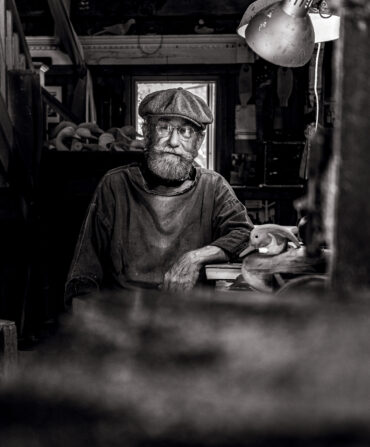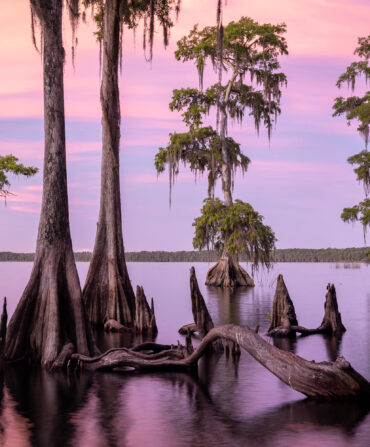Sporting
Sporting South: Best New Lodges
Whether you’re after fin or feather, these destinations deliver
Abaco Lodge
Bahamas
 Oliver White was a top fishing guide in Argentina in 2004 when he met, then guided, the New York City hedge fund impresario Bill Ackman. Ackman was so impressed with White that he hired him to manage money for his fund. White took to the new job extremely well, but after two years of the indoor battleground, he decided his heart was outside, in the “woods and water.” In 2008 he purchased an old hotel on the Bahamian island of Abaco and turned it into arguably the best fishing lodge in the islands. Abaco Lodge—a series of well-appointed private rooms plus a pool, a fire pit, and a large dining area that overlooks the water—offers something for both the novice and the expert. The lodge is located on the world-famous Marls, a 200-square-mile expanse of marine wilderness, home to countless easy-to-catch, two-to-five-pound bonefish. The more experienced fisherman can opt to go after some of the biggest and most challenging bones (and the occasional permit) on the string of cays that line the ocean side of the island, just minutes away from the lodge. abacolodge.com
Oliver White was a top fishing guide in Argentina in 2004 when he met, then guided, the New York City hedge fund impresario Bill Ackman. Ackman was so impressed with White that he hired him to manage money for his fund. White took to the new job extremely well, but after two years of the indoor battleground, he decided his heart was outside, in the “woods and water.” In 2008 he purchased an old hotel on the Bahamian island of Abaco and turned it into arguably the best fishing lodge in the islands. Abaco Lodge—a series of well-appointed private rooms plus a pool, a fire pit, and a large dining area that overlooks the water—offers something for both the novice and the expert. The lodge is located on the world-famous Marls, a 200-square-mile expanse of marine wilderness, home to countless easy-to-catch, two-to-five-pound bonefish. The more experienced fisherman can opt to go after some of the biggest and most challenging bones (and the occasional permit) on the string of cays that line the ocean side of the island, just minutes away from the lodge. abacolodge.com
Bahia Honda Sporting Club
Florida
The Florida Keys have long been known for perhaps the best tarpon fishing in the world, but arranging a trip there—finding a guide and places to eat and sleep—was always a bit of an adventure for those of us who aren’t natural-born do-it-yourselfers. Gordon Baggett, a former guide in the Bahamas and a onetime professional bull rider, believed there was a better way. So he started Bahia Honda, the first all-inclusive lodge in the Keys. Baggett put a premium on flexibility. Guides stay on the premises—a Mediterranean-style mansion on sixteen acres of land—so guests can sync their days on the water to the best fishing times. The lodge’s specialty is tarpon, which Baggett and his guides target on both the Atlantic and the Gulf sides of the lower Keys, generally regarded as the less crowded part of the archipelago. The average tarpon size: eighty pounds. Baggett keeps his lodge small and intimate, hosting only eight guests at a time. When not on the water, those guests can relax by the pool and feast on the lodge’s excellent meals, which have a decidedly locavore feel. The guides harvest main courses of snapper, venison, and alligator. bahiahondaclub.com
Cabin Bluff
Georgia
Cabin Bluff sits among the pines and spartina grass on the banks of southeastern Georgia’s Cumberland River, combining a gilded history that dates back to 1928 with top-of-the-line modern amenities. Guests have the blessed conundrum of having perhaps too many options at hand. The lodge boasts some 24,000 acres of hunting land, more than 1,500 of them dedicated to quail hunting, which is done in concert with Cabin Bluff’s pointing and flushing dogs. Turkey hunting is superb in the spring. Fall offers chances for wild boar and deer. Fishermen hop aboard the lodge’s Hell’s Bay flats boats to target redfish, speckled trout, and—in summer—tarpon. Straight across the river, which is part of the Intracoastal Waterway, await the day-trip-worthy splendors of Cumberland Island, a national seashore that is home to feral horses, great horned owls, and wood storks. cabinbluff.com
Grosse Savanne
Louisiana
Grosse Savanne is deep in the heart of Cajun country, just south of Lake Charles, Louisiana, an area recently recovered from the ravages of Hurricane Katrina. The lodge offers 50,000 privately managed acres of sporting bliss. Hunters will find dozens of blinds hidden among the marshes, over which thousands of ducks (mallards, pintails, gadwalls, and teal) and geese (white-fronted and snow) fly each year. The plantation-style lodge building, which has a gaming room complete with pool and poker tables and hosts up to eighteen guests at a time, is situated on a series of marshy canals that lead to the brackish Calcasieu Lake, famed for its large redfish and speckled trout of up to ten pounds. Fishing guides at Grosse Savanne also have access to southeastern Louisiana’s excellent Gulf-side saltwater marshes, which happen to be fishing very well again after Katrina. Those who prefer to target largemouth bass have two big (484 acres and 84 acres) freshwater impoundments at their disposal. The lodge treats guests to meals with a heavy Cajun bent: Crawfish and shrimp are house staples. grossesavanne.com

Photo: Sheila Hart
A bird dog locks up at Honey Lake Plantation.
Honey Lake Plantation
Florida
Smack dab in the middle of northern Florida’s Honey Lake Plantation is its namesake lake, an eighty-acre spring-fed beauty with healthy populations of largemouth bass that reach weights of up to twelve pounds. Three other such lakes dot the 4,700-acre property. The bass fishing alone—particularly in early spring—would be reason enough to visit. But the hunting might be an even bigger draw. Guests of Honey Lake hunt for quail, ducks, and doves—sometimes all three species in a single day, depending on the season. There is also superb hunting for turkey and white-tailed deer. Quail hunting takes place from the backs of the plantation’s Tennessee Walking Horses, and over the field-trial-winning setters and pointers. A typical weeklong stay at Honey Lake might also include a day spent at the resort’s spa or on its well-designed twelve-station sporting clays course. The plantation handles large groups with ease—it currently has forty-eight rooms, and plans to add another one hundred. One unique feature: A church on the property features the oldest stained-glass windows in the state. High season for bookings and sport is December through February. honeylakeplantation.com

Photo: Chris Verbiski
An Atlantic salmon gets released.
Hunt River Lodge
Labrador, Canada
Chris Verbiski was a mining prospector in Labrador, down to his last few Canadian pennies, when he and his then-partner happened upon a rust-colored slash on a rock high above Voisey’s Bay. That slash turned out to be the home of the richest nickel and copper mine in the world. Verbiski, who is now forty-five, leveraged that find into another precious commodity—some of the world’s best fishing for the “king of gamefish,” the Atlantic salmon. Sportsmen have long celebrated Labrador for its excellent fishing. What it lacked were accommodations to match. Verbiski’s Hunt River Lodge, in northern Labrador, has filled that need with aplomb, with modern rooms and amenities. The lower Hunt River is stacked with eight-to-twenty-pound fish, fresh from the ocean and eager to take dry flies, a method many consider the pinnacle of salmon angling. But the upper portion—an utterly wild eight-mile stretch—is where the magic happens. No one had ever really fished that part of the river before Verbiski opened his camp last year, and thirteen of its twenty pools remain unnamed. The camp offers a rare shot at sporting immortality: If you land and release a fish of twenty pounds or more, you get to name that pool. atlanticrivers.com

Photo: Courtesy of Prairie Wildlife
The main quarters at Prairie Wildlife.
Prairie Wildlife
Mississippi
A few years ago, a farmer named Jimmy Bryan decided he wanted to get back into quail hunting, a pastime he hadn’t pursued since the 1960s. He wanted to do it right, so he hired some wildlife biologists to create perfect habitat for eastern bobwhite quail in the middle of his 6,000-acre West Point, Mississippi, farm. In essence, he returned his land to its original state, the black and prairie that once ran from Mississippi up through Kansas, thick with bluestem and switchgrass. The restoration resulted in some of the South’s finest wild quail hunting, most of it done from the back of mule-drawn wagons. The restored habitat has another bonus: The lodge now also has excellent deer and rabbit hunting. Prairie Wildlife officially opened four years ago with the completion of its five-bedroom lodge. There are also a set of cottages, one of Orvis’s wing shooting schools, and a Land Rover driving school. What’s more, the lodge lies within a 150-mile radius of Memphis, Birmingham, and Jackson—not far to travel to go back in time. prairiewildlife.com







